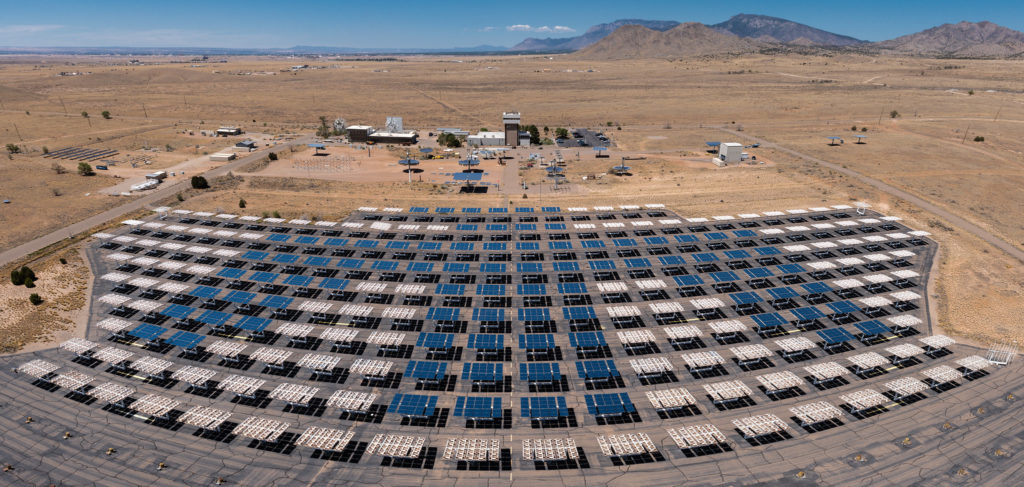
The Inflation Reduction Act (IRA) will catapult the US towards its 2035 climate targets even if module availability will be circumscribed in the near term, and there are still interconnection and skills shortages barriers to overcome.
That was the view of Becca Jones-Albertus, the director of the US Department of Energy’s (DOE) Solar Energy Technologies Office (SETO), who opened up on the office’s perspective as well as its future strategy while speaking with PV Tech at the RE+ solar trade show in Anaheim, California, last week.
Unlock unlimited access for 12 whole months of distinctive global analysis
Photovoltaics International is now included.
- Regular insight and analysis of the industry’s biggest developments
- In-depth interviews with the industry’s leading figures
- Unlimited digital access to the PV Tech Power journal catalogue
- Unlimited digital access to the Photovoltaics International journal catalogue
- Access to more than 1,000 technical papers
- Discounts on Solar Media’s portfolio of events, in-person and virtual
Jones-Albertus said the IRA would “get us a very large share of the way towards the President’s goal of having a decarbonised electricity grid by 2035” given the manufacturing incentives contained within the act.
“It’s a real opportunity to grow a very strong domestic manufacturing sector across the full [solar] supply chain that we haven’t had before because it directly tackles the higher costs for manufacturing in the US,” Jones-Albertus told this site.
But key for SETO, which is equipped with a US$300 million budget to support the development of solar PV in the US, is making sure the benefits of that investment are evenly distributed across the US economy, especially in regards to overlooked communities who may be worst affected by the energy transition.
“We’re expecting millions of jobs and we really want to ensure that those go into the places that need it the most.”
The IRA is expected to add an extra US$110 billion in investment for utility-scale solar in the US by 2030, increasing the country’s utility-scale deployment by more than 70GW, with research firm Wood Mackenzie forecasting a 86% rise in utility-scale buildouts.
“We’re looking broadly at how we can most effectively provide the innovation that the industry needs to accelerate deployment and get to a clean grid by 2035,” Jones-Albertus told PV Tech.
She also laid out her department’s five-year strategy that has been designed to support the rollout of solar PV in the US, which needs to increase the amount of installed solar ten-fold by 2035 to hit those clean energy targets.
“It’s a multi-pronged strategy,” Jones-Albertus explained. “It’s about supporting secure supply chains, supporting innovators, developing new products and manufacturing ideas as well as reducing barriers like interconnection.”
“It’s about bringing stakeholder groups together and having them develop new pathways and solutions,” Jones-Albertus said. “Sometimes those might get turned into laws or regulations at the state or local level, even the national level, but they can also result in sets of best practices.”
One particular recent area of focus for SETO has been the progression of agrivoltaics. Siting projects on agricultural land, which accounts for roughly 74% of land in the US, is “challenging in some areas”, said Jones-Albertus, “as farmers are worried about losing farmland and production, so we’re investing in agrivoltaics.”
When asked about other barriers to the US’ energy transition, Jones-Albertus said near term module supply challenges will persist while the US onshores PV production but that she believes a rapid build-out will ensure enough supply post-2024, which is when the true impact of the IRA is expected to be felt.
On top of this are grid challenges and skills shortages, a theme that was regularly brought up at RE+. A clean energy grid containing 60-80% of solar and wind will require a “totally different way of operating the grid”, said Jones-Albertus. “We’ve done enough testing and studies to feel confident that we can have a safe and reliable grid with inverter-based generation like wind and solar but we don’t have experience doing it to have worked out the kinks.”
“It’s likely that when we’re running a grid off wind and solar, we’re going to have to run these plants sometimes at a little bit lower than their maximum output to reserve some capacity to enable grid operators to have some control over that system,” she said.
“We have a funding opportunity now that’s trying to get some real-world demonstrations that are doing this but we just need a bunch more experience with grid operators using these plants to maintain reliability.”
Another major area to address is a shortage of skills in the US solar sector (this is a major problem in other markets too). Forecasts suggest that the number of solar workers in the US will need to reach roughly 800,000 by 2035, up from around 250,000 today.
“We are already hearing from companies who are having a hard time finding workforce and that’s before the industry grows tremendously,” noted Jones-Albertus. “So, we definitely see workforce training as a big need and we also see it as a real opportunity to bring in workers from underrepresented populations.”
She said this would be done by “working in partnership with unions to build apprenticeship programmes” as well as establishing “workforce partnerships for training”.
“We’re continuing to think about how we can provide some training opportunities to couple this growth that we’re going to see but it’s a huge issue and people are flagging it to us,” Jones-Albertus added.







